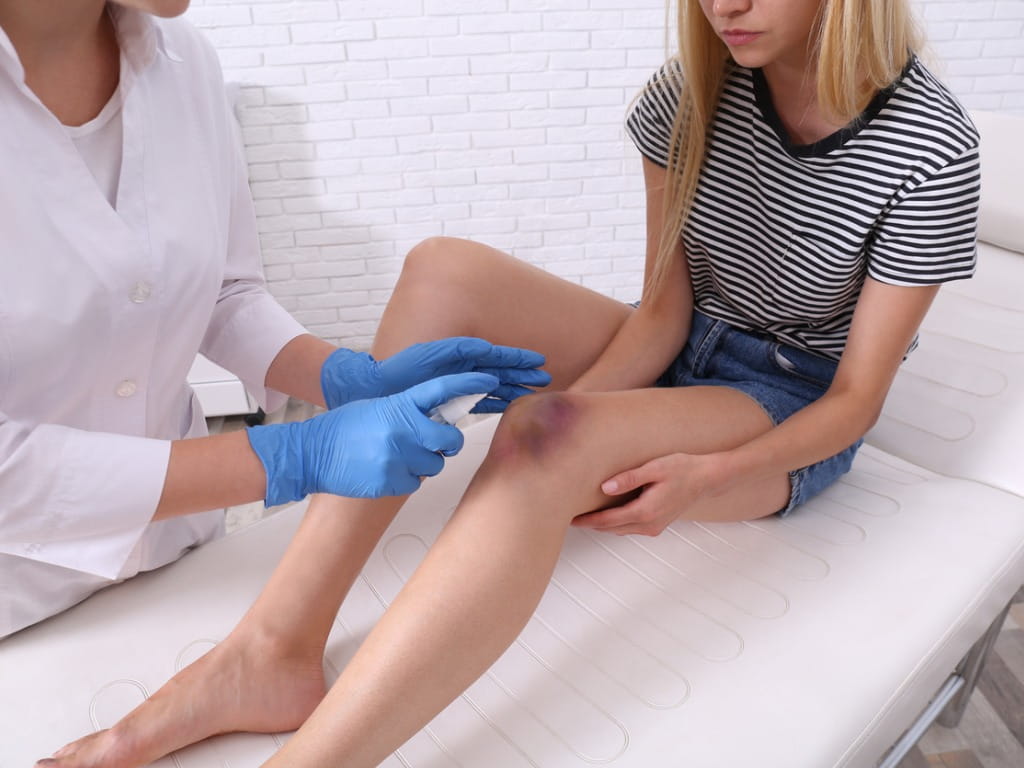What is Ethyl Chloride Spray?

The Bottom Line
Ethyl chloride is a local anesthetic agent that relieves pain by cooling the skin surface. Ethyl chloride abuse, which occurs when individuals intentionally inhale its vapors, can result in sleepiness, abnormal heart rhythms, and death. Ethyl chloride is flammable and can cause frostbite if used incorrectly.

What is ethyl chloride used for?
Ethyl chloride (also known as chloroethane) is a prescription medication that is used as a local anesthetic agent to relieve pain associated with intravenous catheter insertion and minor surgical procedures. It is also used for temporary relief of some sports injuries. Ethyl chloride was previously used as a general aesthetic and was also an ingredient in leaded gasoline. Because of its anesthetic properties, ethyl chloride is classified as a potential drug of abuse.
How should ethyl chloride be applied?
Ethyl chloride is available in aerosol mist spray, fine spray, and medium spray formulations. Ethyl chloride is typically sprayed on intact skin for 3 to 10 seconds, depending on the formulation used. It should be used in a well-ventilated area, with care taken to avoid the patient’s eyes, nose, and mouth.How does ethyl chloride work?
Ethyl chloride evaporates very quickly from skin after it is sprayed, causing the skin temperature to drop to -4 degrees Fahrenheit (-20 degrees Celsius). The drop in skin temperature reduces the skin’s sensitivity to pain. Ethyl chloride inhalation can result in intoxication with symptoms including euphoria, dizziness, and somnolence. Inhalation of ethyl chloride vapors can also cause heart problems, including irregular heart rhythms and death.How long does ethyl chloride last?
When used as directed, ethyl chloride provides short-term local anesthesia. A 10-second spray of ethyl chloride to the skin results in local anesthesia for approximately 30 seconds.What happens if you inhale ethyl chloride?
Ethyl chloride abuse occurs when individuals inhale the vapors directly from a bottle of ethyl chloride (called “sniffing”) or breathe in the fumes from fabric soaked with the chemical (called “huffing”) or a bag that contains the vapors (“bagging”). Ethyl chloride inhalation causes signs and symptoms that are similar to ethanol intoxication. Disinhibition, lack of coordination, and excessive sleepiness can persist for several hours after ethyl chloride inhalation, and affected individuals can also experience abdominal cramping and vomiting. Severe ethyl chloride intoxication can result in a slow or irregular heart rate, cardiac arrest, and death.Does ethyl chloride require a prescription?
Ethyl chloride is a prescription medication and should only be used by licensed healthcare practitioners.Is ethyl chloride flammable?
Ethyl chloride is flammable and can be explosive in air at certain concentrations. It should never be used in proximity to open flames, sparks, or electrical equipment. The United States Food and Drug Administration has received at least one report of a patient who sustained burns when an electrical cautery device was used soon after ethyl chloride was applied to the skin.What are the side effects of ethyl chloride?
Ethyl chloride may cause allergic reactions in susceptible individuals. Because ethyl chloride dramatically cools the skin surface, prolonged application may result in frostbite. Ethyl chloride abuse can lead to tremors, difficulty walking and hallucinations which frequently resolve after individuals stop using the drug.Can ethyl chloride cause cancer?
There are no studies of ethyl chloride’s ability to cause cancer in humans. In animal studies, ethyl chloride exposure was associated with an increase in uterine and liver tumors in female mice.What should I do if ethyl chloride makes me sick?
If you experience a worrisome exposure to topical pain-relieving medications, get guidance from Poison Control immediately. Help from poison control is available online at webPOISONCONTROL by phone at 1-800-222-1222. Both options are free, confidential, and available 24 hours a day.Kelly Johnson-Arbor, MD
Medical Toxicologist
For media inquiries, please contact Krista Osterthaler at osterthaler@poison.org.
Poisoned?
Call 1-800-222-1222 or
Prevention Tips
- Use medications only as directed on the package label.
- Do not huff, bag, or sniff inhalant chemicals due to the risks of serious health effects and death.
- Seek medical care if you develop open wounds, rashes, or persistent skin discoloration after topical application of ethyl chloride.
This Really Happened
Three children, all siblings, underwent ear piercing at a reputable jewelry store. The jeweler applied topical ethyl chloride spray to each child’s ears as a local anesthetic agent to relieve pain associated with the piercing process. However, instead of a brief application of the spray, the jeweler sprayed the product on the ears for several minutes. All of the children developed purple discoloration of the ears and neck, consistent with chemical frostbite. Fortunately, the frostbite injuries healed without scarring.For More Information
Ethyl chloride (The National Institute for Occupational Safety and Health)
Ethyl Chloride Hazardous Substance Fact Sheet (New Jersey Department of Health and Senior Services)
References
Anyanwu-Okoli I. Cutaneous application of ethyl chloride spray. Reg Anesth. 1996 Jan-Feb;21(1):77-8.
Lawson JI. Ethyl chloride. Br J Anaesth. 1965 Sep;37(9):667-70.
Noble DA. Another hazard of pierced ears. Br Med J. 1979 Jan 13;1(6156):125.
Soult TA, Walker JS. Ethyl chloride intoxication. Am J Emerg Med. 1993 May;11(3):313-5.
Poisoned?
Call 1-800-222-1222 or
Prevention Tips
- Use medications only as directed on the package label.
- Do not huff, bag, or sniff inhalant chemicals due to the risks of serious health effects and death.
- Seek medical care if you develop open wounds, rashes, or persistent skin discoloration after topical application of ethyl chloride.
